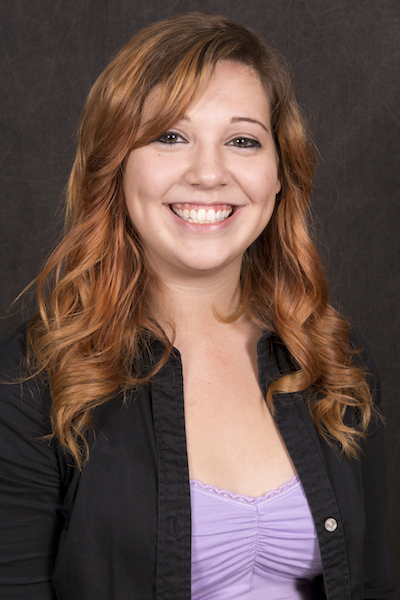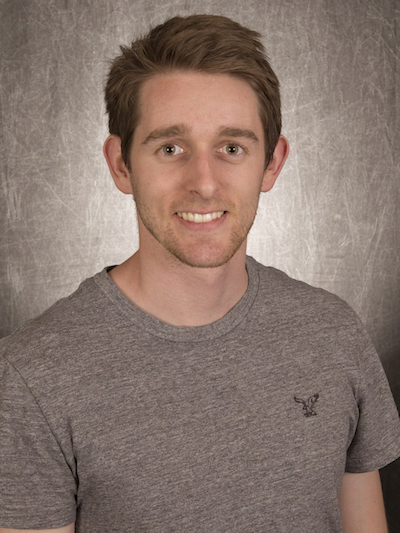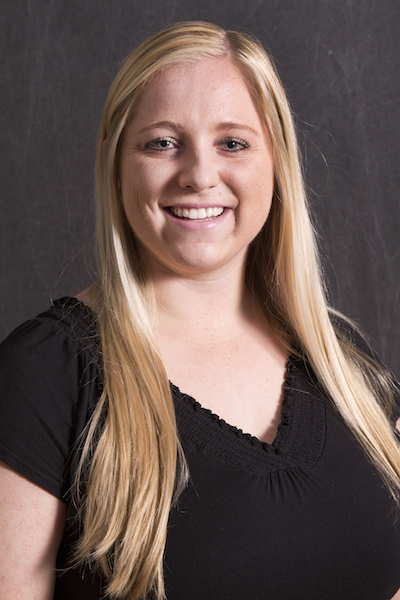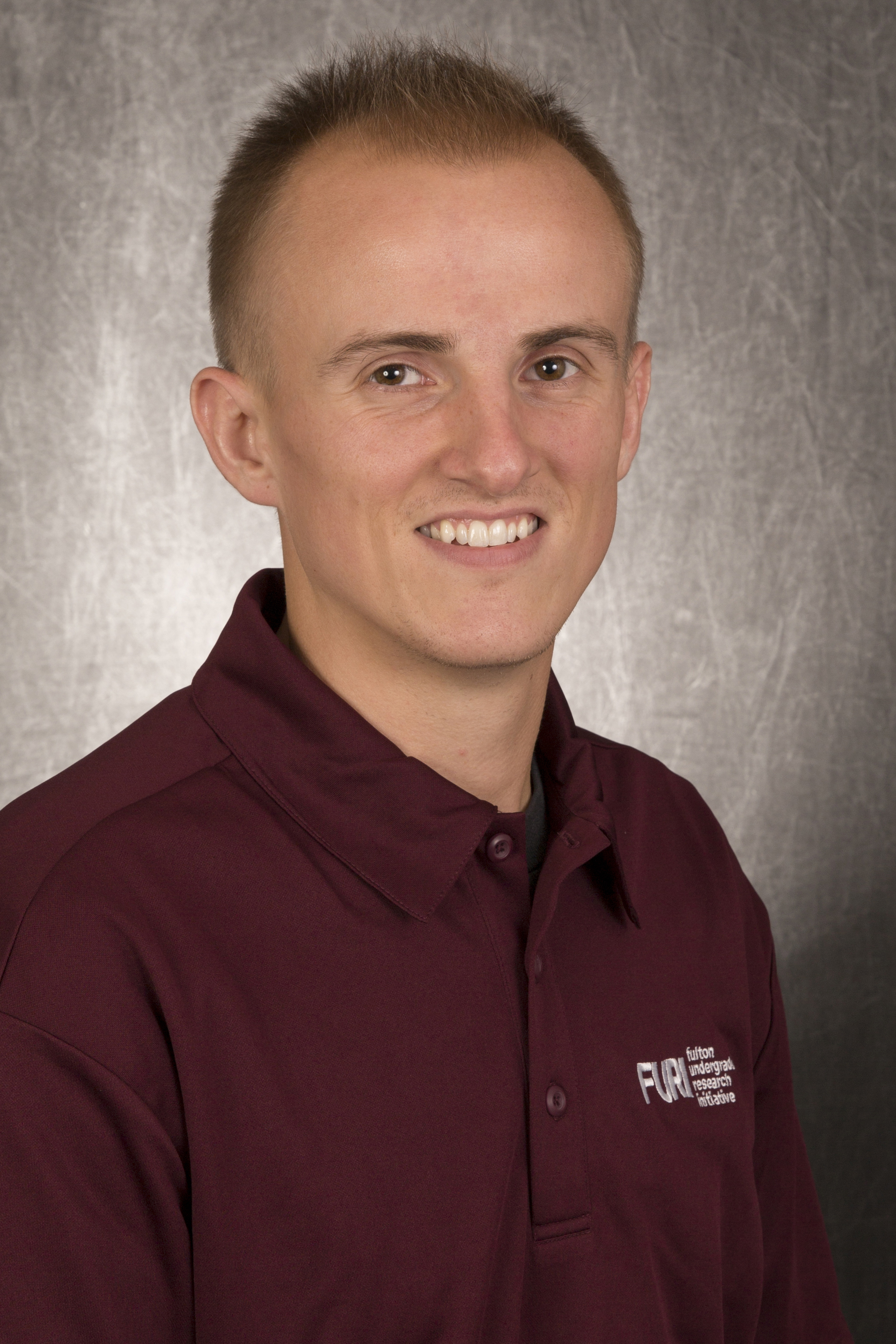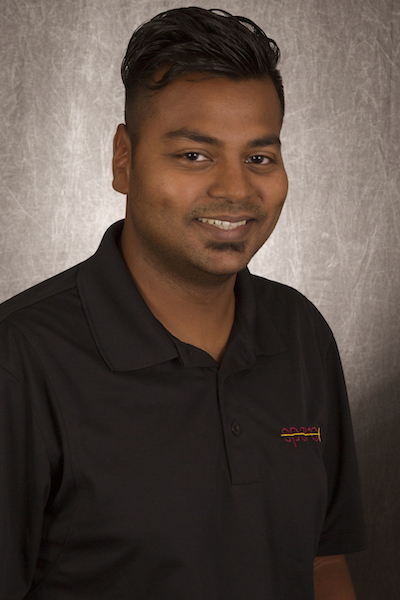Top ASU engineering grads receive honors

2015 Outstanding and Distinguished Graduates.
Editor's note: This story is part of a series of student profiles that are part of our December 2015 commencement coverage.
As the end of the fall and spring semesters approach, each of the six Ira A. Fulton Schools of Engineering select one undergraduate student in each of its academic degree programs as its Outstanding Program Graduate. A number of other students are honored as Distinguished Graduates, chosen both by the Fulton Schools as well as the Dean’s Office for their notable accomplishments beyond the classroom.
Below are a few of the students that were chosen as this years Outstanding and Distinguished Graduates. View all profiles here.
Outstanding Graduates
These students are among the leading performers in academic studies, with high grade point averages for their classroom work and related research training throughout their undergraduate years.
In addition, they have contributed to the Fulton Schools of Engineering’s mission through their efforts in activities such as research, mentoring, service to others and leadership on student engineering projects and team competitions.
Samantha Janko
BSE in Engineering
Home schooled in Gilbert, Arizona
Samantha Janko started at Chandler Gilbert Community College when she was 14. She participated in FURI for the spring 2015 and fall 2015 semesters. As a part of FURI, she participated in research related to adaptive control of campus cooling systems, with the aim of reducing cooling system costs and energy use on the ASU campuses. She feels her biggest achievement was continuing research with her advisor, Assistant Professor Nathan Johnson, which resulted in presenting at a conference, being lead author on a journal article and a study abroad trip to Aruba
Why did you choose ASU?
I chose to come to ASU for the vast number of opportunities they offer within engineering including research and chances to work with industry partners. Specifically, I chose the Polytechnic School for their hands-on engineering program that would provide me with opportunities to gain real experience in my field.
Tell me about a memorable moment at ASU?
One of my most memorable moments at ASU was my experience with studying abroad. I traveled to Aruba with a group of students to learn about sustainability in an island setting. The experience opened my eyes to the multidisciplinary characteristics of sustainability, and that becoming green is as much of a socio-economic and cultural issue as it is a technical engineering issue. This travel, along with my research in sustainability with my advisor, inspired me to continue my studies in graduate school with a PhD in systems engineering.
Can you name a professor that was instrumental in helping you grow?
Nathan Johnson was a professor who impacted my education and growth as a student. He has provided me with so many opportunities to grow and learn from research, as well as assisted me in improving my project management and writing abilities. He has introduced me to the real world of engineering research, and is always open to answering questions I have whether it be technical questions or questions about professional development and graduate school.
What are your plans after graduation?
I have plans to continue my education next year as a master’s student in the Engineering M.S. program, followed by work as a PhD candidate in systems engineering.
Kenneth Lozes
BSE in Aerospace Engineering
Graduated from Washington High School in Phoenix, Arizona
Lozes was in the Society of Automotive Engineers (SAE) aircraft design club at ASU that designs, builds and flies a radio-controlled aircraft to compete in the SAE Heavy Lift Competition. He was the composite structures and aerodynamics team lead, and led the wing design and fabrication effort this year for the project, helping to build an eight-foot foot wing prototype that improved on the wing the club built last year. He also worked with the Orbital Sciences company (now Orbital ATK), where he learned about the engineering of space launch vehicles. He was awarded the ASU Provost’s Scholarship and made the Dean’s List every semester.
What led you to choose to study engineering and to decide on the specific major you chose?
I grew up fascinated by the idea of living in space, like in all the science fiction shows I watched, and I always loved going to aerospace museums and air shows, and even reading all technical books about fighter jets that my father would bring home for me. So I think I kind of chose aerospace engineering a long time before I went to college.
What has been most rewarding about your undergraduate years at ASU? What has been most challenging?
The most rewarding experience has been working at the Engineering Tutoring Center, where I am one of lead tutors. I have really enjoyed helping students understand all the fundamental engineering concepts. In addition, the deep understanding of these concepts I have gained over the years has helped tremendously in applying them to my higher-level classes as well as real-world problems.
What are your plans after graduation?
I plan to continue going to school to earn a master’s degree in the 4+1 program, focusing on studying the engineering of propulsion systems for high-speed aerial vehicles and rockets. I would like to be part of making access to outer space much safer and more economical. My dream would be to start a company to develop a propulsion system to do just that.
Sydney Vanda
BSE in Biomedical Engineering and BSE in Computer Systems Engineering
Graduated from Corona del Sol High School in Tempe
Sydney Vanda is a double major in Computer Systems Engineering and Biomedical Engineering and is in Barrett, the Honors College. She holds a Regents High Honors Endorsement, was a three-time recipient of the Kroger Dependent Scholarship, received the 2012 Impact Award for EPICS and has been inducted in the Tau Beta Pi and Eta Kappa Nu Engineering honors societies. She participated in FURI and EPICS. She also sang in the Barrett Choir and was on intramural co-ed basketball and volleyball champion teams on engineering-sponsored teams.
Why did choose to come to ASU?
I grew up with ASU in my backyard practically and wanted to be a Sun Devil! Also because I knew there were plenty of great engineering programs, which I knew I wanted to pursue at the time.
What led you to choose to study engineering?
I knew I was great at math and science from an early age. Originally I was enrolled at ASU as an electrical engineering major, however I went to a talk given by the director of the School of Biological and Health Systems Engineering at the time, William Ditto, and he inspired me to make a difference in the medical space and I switched my major to biomedical engineering. During my second semester, I took my first programming class and really loved it. Not wanting to give either up, I decided to take on the challenge of completing both degrees.
Name a professor who was particularly instrumental in helping you grow as a student?
Lecturer Debra Calliss — she inspired me to stick with computer systems and helped me make the decision to include it as another degree. She also served as a role model and an outlet that I felt comfortable talking with about current struggles and also future goals.
How do you see your future?
I would love to work on embedded devices for the medical field and hopefully create something that truly helps someone someday.
Distinguished Graduates
These students have made a positive impact at ASU and in communities in Arizona through their leadership, public service, K-12 education outreach, research achievements and social entrepreneurship efforts.
Evan Hammac
BSE in Aerospace Engineering
Graduated from Highland High School in Higley, Arizona
Originally from Towcester, England
Hammac participated in the Fulton Undergraduate Research Initiative (FURI) program for two semesters. He devised a new design for a force balance that works in a sub-sonic wind tunnel, and began constructing it. It’s now used to teach fellow students about aerodynamics.
What led you to choose to study engineering and to decide on the specific major you chose?
Ever since I can remember, I have been looking up at the stars and been fascinated by how the world works. Getting involved in engineering seemed the natural progression for my life.
What has been most rewarding about your undergraduate years at ASU? What has been most challenging?
The most rewarding experience at ASU would be without a doubt FURI. I learned so much about myself and about engineering. The most challenging thing has been learning to balance life with schoolwork.
Is there a professor who has been particularly instrumental in helping you grow as a student? How and in what way did they impact you?
Lecturer Benjamin Mertz has been instrumental in my success at ASU. He was my FURI mentor and prior to that my professor for a required course in my major. It was a conversation with him that first inspired me to engage in FURI.
What great engineering achievements would you most like to be part of making happen In the future?
My long-term career aspirations are to be instrumental in a large aerospace company. I don’t quite know exactly how, but I know once I get into industry I will make quite an impact. I see my future as a very bright one. My dream is to go into space.
Peter Harper
BSE in Mechanical Engineering
Graduated from Heritage Academy
Originally from Mesa, Arizona
Peter Harper served as the chair and president of the ASU chapter of the American Society of Mechanical Engineers (ASME). He worked with a Fulton Undergraduate Research Initiative (FURI) team, helping to select and set up a gamma radiation detector to study whether lithium-ion batteries could determine where the nuclear material came from in a nuclear weapon.
What led you to choose to study engineering and to decide on the specific major you chose?
I chose to study engineering because I grew up around it. My dad worked as an engineer in the aerospace industry. I chose to major in mechanical engineering because it gives me a broad skill set and a lot of employment opportunities.
Was there a particular “Ah-Ha!” moment when you knew that you were on the right path in your college studies?
By participating in ASME, I was able to gain leadership experience and network with other students and employers. The networking experiences led to my first internship experience, which in turn has opened the door to two more internships. These internships have been valuable opportunities to not only gain experience, but also better understand what I want to do as an engineer.
Is there a professor who has been particularly instrumental in helping you grow as a student? How and in what way did they impact you?
James Middleton has helped me by encouraging me to love learning, learn from my mistakes and by answering my questions, both in class and outside of class.
What are your plans after graduation?
I will stay at ASU to earn a master’s degree in mechanical engineering through the 4+1 program. I want to work in the defense or aerospace industries. While transitioning from attending classes to looking for a full-time job is intimidating, I‘m excited about the opportunities ahead. I would love to work for an aerospace company, because each day I could look into the sky at planes flying overhead and know that I help make them fly.
Mayank “Max” Prasad
MS in Computer Engineering
Graduated from VIT University in India
Originally from New Delhi, India
Mayank Prasad came to ASU for the computer engineering curriculum and proximity to companies such as Intel, Freescale, Microchip, NXP. He was also drawn to the great entrepreneurship program. He earned an Experiential Learning Grant from Fulton Schools Startup School to attend the European Innovation Academy in Nice, France in July 2015. He works with ASU’s Office of Entrepreneurship and Innovation as an E+I ambassador, was an ASU Startup School certified facilitator and was one of the founding members of the new ASU Startup Hotline to help students with their startup-related questions.
Did you participate in any student organizations?
I started a new Fulton student organization — SPARCe (pronounced “sparky” – Students’ Project and Research Consulting in Engineering). It’s a student-run consulting group that helps engineering students get application based hands-on experience by giving them an opportunity to work on real-world projects from local businesses and non-profits. After its success, I started The Talent Network. The Talent Network makes it easier and faster for tech companies to discover and hire student developers for internship/part-time/full-time work.
Can you name a professor who was particularly instrumental in helping you grow as a student?
Yes — two actually! Lecturer Brent Sebold and Faculty Associate Ken Mulligan. Brent is the director of Fulton Schools Startup Center and Ken is with the same startup center. I took the course — FSE501 Technology Entrepreneurship with them. They helped me learn the lean launch methodology for startups and helped me convert my idea into a business. They helped me realize that entrepreneurship is a way of life. They are also my two biggest cheerleaders.
What are your plans after graduation?
I am an entrepreneur — going full-time for my startup, The Talent Network. Also maybe work part-time at a paying job until we raise seed money for my startup. In the long term, I would like to see The Talent Network become a successful company. At the same time I would like to get involved with a tech startup and help them build a revolutionary product (like internet of things), something that aligns with my purpose on this planet.
More Science and technology

Making magic happen: Engineering and designing theme parks
The themed entertainment industry is widespread and diverse, encompassing everything from theme parks to aquariums, zoos, water…

AI-equipped feeders allow ASU Online students to study bird behavior remotely
ASU Online students are participating in a research opportunity that's for the birds — literally. Online Bird Buddies is a…

National Humanities Center renews partnership with Lincoln Center for responsible AI research
The National Humanities Center has announced that Arizona State University's Lincoln Center for Applied Ethics is one of four…
